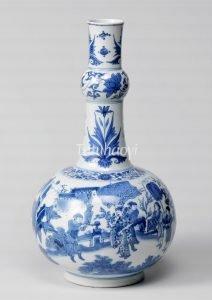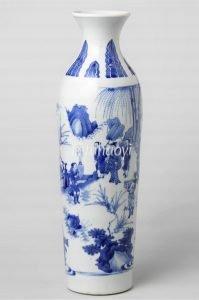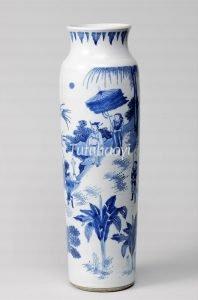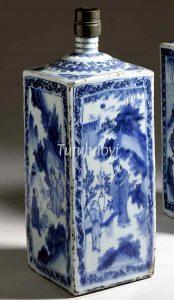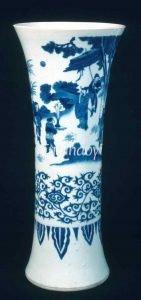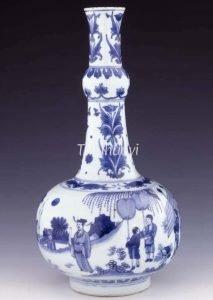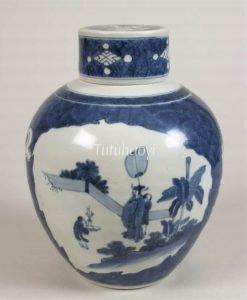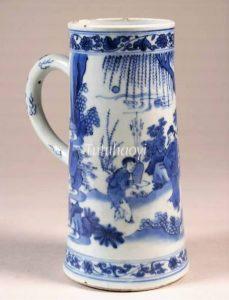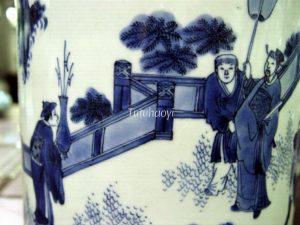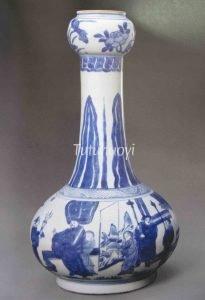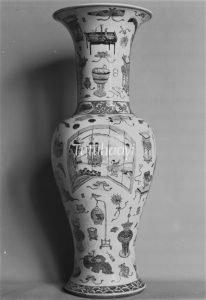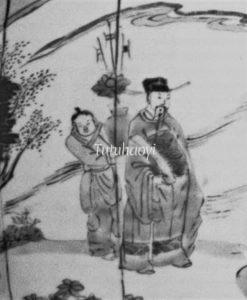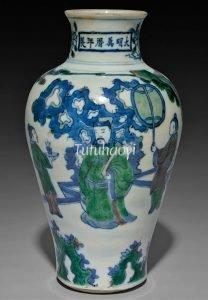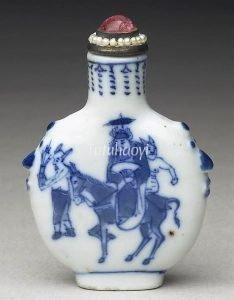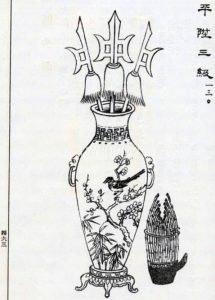May you have three successive promotions unexpectedly!
平升三级
© Tutuhaoyi.com owns the copyright of the description content for the images attached. Quoting all or part of the description content on this page is permitted ONLY IF ‘Tutuhaoyi.com’ is clearly acknowledged anywhere your quote is produced unless stated otherwise. (本页描述内容版权归Tutuhaoyi.com所有,转发或引用需注明 “Tutuhaoyi.com”, 侵权必究, 已注开源信息的条目除外。)
The main figure in the scene is a dignitary, often gripping a hu (笏) tablet in his hands, which an official uses to take notes when he has audience with the emperor in court. He is usually sheltered by page boys erecting some fans or a parasol or guarded by a soldier holding a weapon with an iron melon on the top. Facing the dignitary is an attendant presenting a vase containing three miniature ji (戟) halberds to him. Sometimes there is a tray underneath the vase. The Chinese character for ‘vase’ is 瓶 ping, which is a pun on 平 ping for ‘unexpectedly’ or ‘surprisingly’. The character for the halberd is 戟 ji, which puns on 级 ji for ‘grade or rank’ and three halberds stand for ‘three ranks’. Put together, the design is used to express the message “May you have three successive promotions unexpectedly” (平升三级 ping sheng san ji).
Related Pun Pictures:
May you have three promotions continuously! 连升三级
May you be created a peer and earn a handsome official income 爵禄封侯
Fig 1-3: three porcelain vases with underglaze blue decoration, Chongzhen period (1628–44), Ming dynasty, courtesy of the Rijksmuseum, Holland
Fig 4: porcelain bottle with underglaze blue decoration, Tianqi (1621–27) or Chongzhen (1628–44) period, Ming Dynasty, courtesy of Los Angeles County Museum of Art
Fig 5: porcelain vase with underglaze blue decoration, Chongzhen period (1628–44), Ming dynasty, courtesy of the Royal Ontario Museum, Canada
Fig 6-7: porcelain vase with underglaze decoration, Chongzhen period (1628–44), Ming dynasty, courtesy of the British Museum
Fig 8: porcelain lidded jar with underglaze blue decoration, 1643, Chongzhen period (1628–44), Ming dynasty, courtesy of The Princessehof Ceramics Museum
Fig 9: porcelain mug with underglaze blue decoration, Chongzhen period (1628–44), Ming dynasty, courtesy of The Princessehof Ceramics Museum
Fig 10: porcelain brush holder with underglaze blue decoration (detail), Chongzhen period (1628–44), Ming dynasty, courtesy of Sir Michael Butler Collection
Fig 11: porcelain vase with underglaze blue decoration, Shunzhi period (1644–61), Qing dynasty, courtesy of Palace Museum, Beijing
Fig 12-13: porcelain vase with underglaze blue decoration, Kangxi period (1662–1722), Qing dynasty, courtesy of the Metropolitan Museum of Art, New York
Fig 14: porcelain vase with underglaze blue and overglaze enamelled decoration, Qing dynasty (1644–1911), courtesy of The Cleveland Museum of Art
Fig 15: porcelain snuff-bottle with underglaze blue decoration, 19th century, courtesy of the National Palace Museum, Taipei
Fig 16: illustration, Kisshō zuan kaidai : Shina fuzoku no ichi kenkyū by Nobuchika, Nozaki, Pl. 130, Tenjin: Chn̄goku Dosan Kōshi 1928
